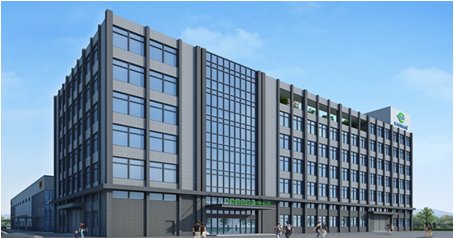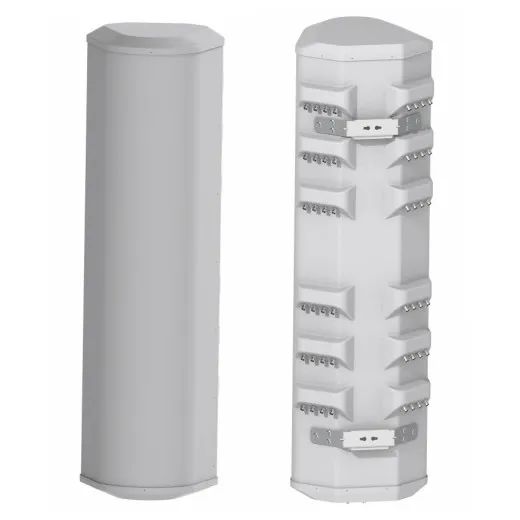PLAINVIM CORPORATE VIDEO
企业宣传片
2023/28/01 ![]() 0
0
With the development of the mobile communication industry, there are more and more common sites of multiple operators, and each operator needs to operate multiple networks at the same time. As a result, the sky resources of the sites are very tight, and there is no place to install equipment and antennas in the construction of 5G in a large number of existing stations. How to integrate the antenna feed system of the live network and give consideration to the network quality and construction cost has become one of the urgent problems to be solved. At the same time, the development of various services and applications of 5G network has increasingly higher requirements for network capacity, and the problem of how to effectively increase network capacity is becoming more and more important.

The options for increasing capacity are as follows: One is to increase spectrum utilization. Through higher order modulation, the amplitude and phase of radio waves are changed more, and more carriers of different states are generated to transmit more information. However, in the wireless environment, the complex modulation mode is easy to lead to higher bit error rate of data transmission, and the solution is complex. The second is to increase spectrum bandwidth. It is easier to increase bandwidth than to improve spectrum utilization. However, at present, the 4G frequency band is below 3GHz, the available bandwidth is limited, and the frequency band is strictly allocated, so the additional spectrum resources are limited, and the expansion prospect is insufficient. The third is to realize ultra-dense networking. By increasing the number of cells in the same area, users are divided into different cells to carry the load, and the unit area capacity density is improved, so as to realize the capacity increase. This is the most rapid, convenient and feasible capacity improvement solution at present. The main problems of super - dense network are site selection and interference coordination. At present, the common idea is to increase the site, more small stations, reduce the distance between stations and other ways to achieve ultra-dense networking. However, ultra-dense networking requires the site closer to the user and the height of the sky is moderate. Due to the excessive concern of the public about radiation and other issues, it is difficult to select a suitable site. At the same time, inter-cell interference coordination problems caused by site density will also increase, and dense cells will lead to increased overlapping coverage and deterioration of cell edge coverage quality. If inter-cell interference can not be effectively solved, the capacity gain brought by ultra-dense networking will decrease.
To solve the above problems, the 48-port multi-frequency multi-beam Luneburg lens antenna of EAHISON Communications Co., Ltd. came into being. The product can not only meet the requirements of integrating the sky surface and saving site resources, but also meet the requirements of refined network coverage and network capacity expansion, providing cost reduction, efficiency and green energy saving solutions.

The 48-port multi-frequency multi-beam Luneburg lens antenna realizes ultra-dense networking, which has the following advantages:
1. Narrow beam deeper coverage: a sector is split from a 65-degree horizontal lobe into a narrower lobe, with increased power spectral density and enhanced edge signal, so as to achieve better depth coverage.
2. Better isolation: Through the Luneburg lens technology, the amplitude and phase modulation of signals between multiple beams is realized. The isolation degree is good enough, and the overlapping coverage between beams is small, so as to ensure that the interference between beams is controllable.
3. More cells in multi-sectors: Due to the better isolation between the beams, the business collaboration between the cells of different base stations can be established to realize the same frequency networking. At the same time, multiple carrier cells (such as TDD-D1/D1/D3) can be opened on each beam to achieve greater capacity; Theoretically, a single D band three-beam antenna can support 9 carrier cells in a single antenna.
4. Low carbon and energy saving: the 48-port multi-frequency and multi-beam Luneburg lens antenna can be replaced to benefit the existing site resources without adding new stations, which can realize rapid expansion.
With the continuous improvement of 5G network and the development of various emerging services, operators have higher and higher requirements for network capacity. Ultra-dense networking is one of the measures operators must take, which brings problems such as difficult site selection, high construction cost, overlapping coverage of stations, and large interference between stations. The application of 48-port multi-frequency multi-beam Luneburg lens antenna can effectively solve the above problems. The solution can also be used to deal with universities, high-end CBD, concerts, sports events, plazas and other ultra-high traffic and large events ultra-dense scenes. EAHISON has been deeply engaged in the wireless field for decades. In the New Year of 2023, Eahison launched the 48-port multi-frequency multi-beam Luneburg lens antenna in the industry, hoping to help the construction of operators' networks and bring exploration and contribution to the development of the mobile communication industry.
PLAINVIM CORPORATE VIDEO
企业宣传片